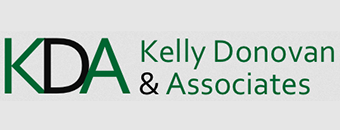In the past, including your home address on your resume was a formality that readers expected to see. But today, it’s no longer necessary, at least in the U.S.
There are good reasons you might want to leave your home address off your resume.
Your commute could be a concern
Having your address on your resume could cause you to be discriminated against based on your commute.
If you live 75 minutes away from the company, and an equally qualified candidate lives 5 minutes away, who do you think has the edge?
This isn’t as big of a deal for an executive candidate as it is for an entry-level candidate, but nevertheless it can still be at least somewhat of a factor at all levels.
After all, companies love employees who will arrive early and stay late–and workers who live farther away might have a harder time doing that since they’re spending so much time commuting.
Most executive roles necessitate a significant time commitment, and having to spend an extra 2+ hours in a day on a round-trip commute is a drain on both time and energy.
Even with the advent of hybrid work, where you might be remote a couple days a week, commute time still might be a consideration.
Additionally, a candidate who lives further away is more of a flight risk; employers will worry you’re going to leave the company and take a job closer to home as soon as you find the right opportunity.
Privacy is a greater concern now
Your address provides personal information that you might not want hundreds or thousands of strangers to have; these days, it’s easy to look up your address online and find out the value of your home, what the residence looks like, who else lives there, when it was purchased, and many other details.
Chances are, they wouldn’t look it up right away, but if you did become a finalist, you never know.
Do you want your prospective employer to make judgements about you based on their perception of your primary residence?
The perception could be “oh, that’s an expensive house–he’s going to want more money than we want to pay!” Or, “ugh, look at that shack!”
It puts you at risk for identity theft
These days, you can never be too careful about protecting yourself against identity theft.
Your home address is one of many pieces of information cybercriminals would like to find about you as they put together all the puzzle pieces they need to steal your identity.
Sure, your address is one of the less sensitive pieces, but still – why make it any easier for them?
Even if you trust the recruiter or company you’re giving the resume to, you simply never know whose hands it could end up in, whether it’s an unscrupulous temp worker, a janitor who likes to snoop, or a criminal who hacks into something.
It takes up valuable space
The space devoted to your address could otherwise be used for something more useful, like a link to your LinkedIn profile.
A link to your LinkedIn profile makes it fast and easy for a recruiter or hiring manager to access your profile with no searching required. That’s a huge plus, because a search for someone’s name often pulls up many results, which can be confusing.
What should be included instead?
Instead of having your full address, you might want to put a metro area.
For example, you could put “Los Angeles Area” instead of putting “Studio City” or whatever specific part of the metro area you’re in.
This is unless you’re seeking jobs that are right there in your town or neighborhood, in which case being local would be a selling point.
If the location of your current job is an accurate reflection of the metro area you’re in, you could theoretically omit any mention of the metro area in the contact information. However, some recruiters would prefer the clarity of knowing your location.
No matter what, your email and phone number should always be on there (only ONE phone number–the best one to reach you at).
When you DO need to provide your address
It’s also worth noting that the address still needs to be provided sometimes.
If you apply for a position on a company’s website, 99% of the time you’ll have to fill out a form that prompts you for your address, and it’s probably a required field.
For an executive, an online application might not be part of your journey, but you might provide your address later in the hiring process, like when it’s time for a background check.
This article first appeared on KellyDonovan.com









